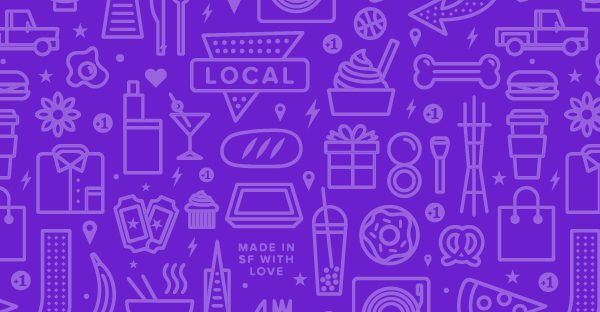There’s a fantastically funny scene in season two of the U.S. version of The Office where temp Ryan Howard attempts to explain a few things to his boss, Michael Scott, that he’s learned at business school (which Michael never attended):
Ryan: Is it cheaper to sign a new customer, or to keep an existing customer?
Dwight: Keep an existing…
Michael: [to Dwight] Shut, it. Can I… can I just do it please? [to Ryan] Uh, it’s equal.
Ryan: It is ten times more expensive to sign a new customer.
Michael: Okay. Yes! It was a trick question.
While Michael’s buffoonery and cluelessness are always great fodder for humor, there’s an underlying truth to this exchange. It’s almost common knowledge to most folks in the business world that it is indeed FAR more cost effective to retain an existing customer than it is to bring on a new one. But why is that exactly? What precisely are the costs associated with acquiring a new customer? What steps can business owners take to try and keep their current customers, and why is that so important?
Why Turning Customers into Loyal Customers Should be a Priority for Every Small Business Owner
First of all, a small correction to Mr. Howard’s claim – it is actually only seven times cheaper to keep an existing customer as opposed to signing a new one, according to a recent report by Frederick Reichheld of Bain & Company. Still, that’s an alarmingly high number. Why is it so expensive to bring on a new customer? Let’s look at some of the traditional costs that go by the wayside for existing or returning customers:
1. Advertising
How are new customers going to know about your business? Word of mouth can work, but is an unreliable and near impossible-to-track metric. Tried and true advertising is still one of the most reliable and efficient ways to attract new customers, and unfortunately, it isn’t cheap. Repeat customers, however, know you. They know your services and are familiar with how you operate.
2. Price Sensitivity
Studies have shown that new customers are much more likely to feel your goods and/or services are priced too high if it is their first time entering your business. Even if your prices are competitive or lower than your competition’s, the psychological component of being a bit unwary spending your hard-earned cash at a new location is a factor. Loyal customers are much more likely to not think twice about the prices offered for things they already know they need and/or want, and will not balk at (reasonable) price increases either.
3. Customer Education
While it might not seem like much, there is a significant amount of time (and thusly money) spent on informing new customers about your business. Walk-ins to a brick-and-mortar business might want to know the history of the place, how long you’ve been at this particular trade, what exactly your product is, etc. Returning customers already know what they want to know about your business, and they like what they’ve found out.
4. Inefficiency with New Customers
Even if somebody had already purchased your goods and/or services, there is still an initial period where they are becoming familiar with exactly how you and your employees operate. It’s important to cater to them in this initial period so they break that barrier and become a loyal spender at your business, but again – it takes time and money.
How can you avoid having first time customers be one-time customers?
A critical component of this is staying in contact with them and avoiding having your customer databases go dormant (as hinted at above). The same Bain & Company study that arrived at the costs associated with new customers vs. repeat customers revealed that customer attrition rates reached as high as 50% over a five year period if databases are left dormant.
Conversely, businesses that spent time going through their databases in an effort to improve retention were rewarded handsomely – businesses that increased their customer retention rate by as little as 5% experienced increased profits anywhere from 5% to a staggering 95%.
Once a customer is considered loyal, the benefits in costs are readily apparent.
- They have reduced price sensitivity, meaning not only are they not going to flinch at your normally priced goods, but they are much more likely to opt in to your premium goods. You can expend a little effort in pushing your top-tier packages their way for a potentially marked increase in revenue.
- They are intimately aware of your business, so you can dramatically reduce the amount and frequency of advertising and promotions. While it would not be wise to forget about them entirely, loyal customers need far less communication to keep you and your business at the top of their minds, as they have already proven to be repeat buyers.
- They allow you to reduce the amount of time and money spent on setting up new accounts and explaining your business practices. Once a customer is loyal, your dealings with them become much more efficient and swift, which saves overall.
Repeat buyers are loyal customers who will continue to purchase goods and services from you. They may have become this loyal for a variety of reasons: you may offer something that they cannot get elsewhere; your product may be appreciably better than your competition’s; your distribution channels or actual storefront are more pleasing and efficient; or you or your employees may have provided superior customer service than what is offered at your competitors. Regardless, you’ve already done the hard part – now, you just have to keep them.
Popular options that have been proven to go over well are loyalty reward programs. Repeat customers have been regularly giving you their money, and what better way to thank them than by rewarding that loyalty. Not only can they earn valuable prizes and discounts for their repeat business, but they will inherently feel like they’re a part of an exclusive, VIP-type club that only allows the most top-tier, elite customers.
Loyal Customers Are the Biggest Supporters of Word-of-Mouth and Revenue
Foster and nurture this relationship, because loyal customers are without a doubt one of the most important ways to help grow your business. Not only for the fairly obvious reasons of their spending habits, but they are also your biggest fans and supporters. They will not only continue to purchase from you, but they will also evangelize your product to their friends, coworkers, family members and neighbors. Positive word-of-mouth advertising is one of the most difficult and most valuable forms of advertising in existence, and it can only be reliably and regularly disseminated through loyal, repeat customers.
This is no secret – Forbes recently conducted a survey with 300 marketing experts representing a large swath of big businesses and inquired about which aspects are deemed critical to successful customer engagement. Out of six potential answers – repeat purchase behavior, customers becoming brand advocates who market on your behalf, customer willingness to pay a premium, customer resistance to competition, customer support for brand that reduces marketing and advertising, and customer volunteer time to improve products and services) – customer loyalty (repeat purchase behavior) was far and away the most popular choice, with over 70% of the marketing experts listing that as the most important aspect of successful customer engagement.
Although Ryan Howard’s career arc on The Office is not one business owners should try to emulate, there is a lesson in the lesson he learned at business school. You should do everything in your power to retain your existing customers and turn them into loyal, repeat buyers. They can be your most powerful tool in establishing your brand, increasing your revenue and growing your business.






Aside from acquiring and retaining a customer is the “cost” of someone no longer patronizing your business and you not having any way to reach out to them to address their potential concerns. It is likely that a dissatisfied customer is going to equally utilize “word of mouth” advertising in a detrimental way for your business. Reaching out and addressing a customers concerns can make them an even more loyal customer!